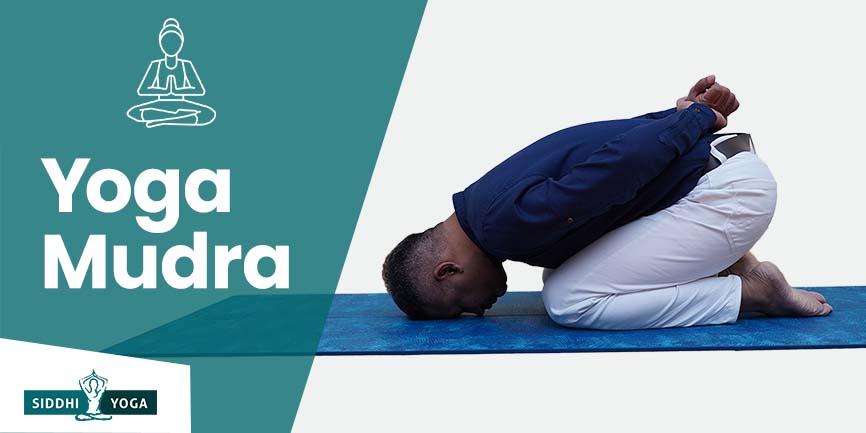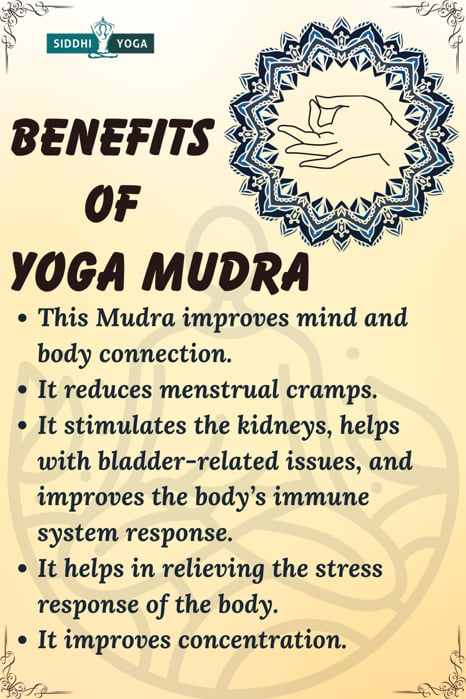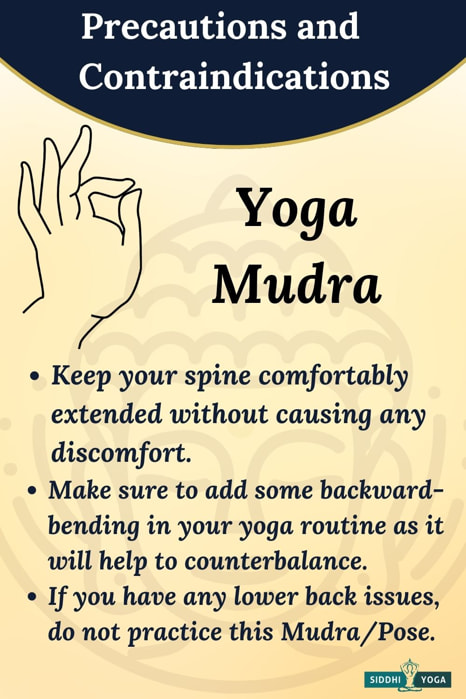
Yoga Mudra recreates the human form in its role of being a part of the Divine. Discover the benefits of Yoga mudra, its meanings, and how to do it.
Definition – What is Yoga Mudra and its Meaning, References, and Mythology?
Yoga Mudra is one of the Mudras. This Mudra is sometimes known as the Yoga Asana or Yoga Mudrasana. This is believed that practicing this Mudra can enhance memory power to a great extent. So all those who have forgetfulness should practice this to seek better results.
This Mudra has great benefits while dealing with anger-related issues. Anger-related issues are progressively increasing. We often hear from various people that they have anger issues. Some of them even flaunt it. Anger is something that we should abstain ourselves from. Certain quotes perfectly depict what anger does to us, such as “You will not be punished for your anger. Your anger will punish you.” Practicing this Mudra helps to resolve anger issues.
This Mudra can also help stimulate the organs located in the stomach, primarily our digestive system-related organs and our kidneys. Due to this, practicing this Mudra can improve digestion and help resolve digestion-related issues such as diarrhea and constipation. It also stimulates the kidneys to improve their functioning, helping with bladder-related issues. As our adrenal gland is located around the kidneys, it can also help increase the body’s immune system response. It also relieves menstrual cramps.
This Mudra brings groundedness, peace of mind, and clarity to the thought system. We feel a complete sense of surrender. We let go of negativities and become more aware of the internal body. This Mudra relaxes the stress response of the body.
It is a forward bending Mudra/Posture, so while we bend forward, it stretches the muscles around the back, such as erector spinae muscles. It also helps to remove the tightness around the glutes (or the hip muscles).
Alternate Names of Yoga Mudra
Yoga Mudrasana or Yoga Asana.
How to Do Yoga Mudra?
- This Mudra is based on one of the Specific bodily Yoga postures.
- We will start by sitting comfortably, cross-legged, preferably in Lotus Pose (Padmasana) or Auspicious Pose (Swastikasana). However, you can practice it while performing Sukhasana as well.
- The neck and spine should be comfortably erect.
- Entire awareness should be focused on the breath.
- Slowly & comfortably close your eyes if you feel comfortable doing so.
- Place your hands comfortably on your knees, then slowly bring your arms back. Slowly grab your left-hand wrist joint with your right hand.
- Take a deep breath and let your belly and chest come out.
- Then, as you exhale, empty your stomach while bending forward.
- Your forehead should be touching the ground and should be comfortable. Feel the groundedness.
- Make sure you are not experiencing any discomfort around the back, especially in your cervical and lower back regions.
- Bring your awareness to the breath and breath as deeply as you can and hold this posture for 3-5 minutes or according to your suitability.
- Now, if you feel comfortable, you can also add the “OM” mantra chanting for deeper concentration.
Yoga Mudra Benefits

- This Mudra helps you to feel the groundedness you become more down-to-earth.
- This Mudra helps stimulate the digestive organs, so it helps deal with diarrhea and constipation.
- This Mudra improves mind and body connection.
- It reduces menstrual cramps.
- It stimulates the kidneys, helps with bladder-related issues, and improves the body’s immune system response.
- It helps in relieving the stress response of the body.
- It improves concentration.
Yoga Mudra Precautions and Contraindications

Similar to all other Mudra practices, it has no side effects.
However, there are a few things to consider:
- If you have any lower back issues, do not practice this Mudra/Pose.
- Make sure that you do not experience any lower back issues. If you experience any lower back or cervical area-related issues, slowly return to a comfortable posture.
- Keep your spine comfortably extended without causing any discomfort.
- Make sure to add some backward-bending in your yoga routine as it will help to counterbalance.
When and how long to do Yoga Mudra?
- This Mudra can be practiced if you want to attain knowledge.
- If you are stressed, practicing this Mudra can help alleviate it.
- If you have digestive system-related issues, then you should practice it.
This Mudra can be practiced whenever you feel you are lacking focus. Especially those days when you feel dull. You feel that you lack courage and energy.
Morning is the ideal time to do any yoga or Mudra. In the morning, during the daytime, our brain is at its best. So, you are more likely to be able to concentrate easily. Therefore, you should practice this Mudra from 4 am and 6 am to get the most effective outcomes.
If you are having difficulty with this during the morning hours, you can do this Mudra later in the evening too.
Practicing this Mudra for a minimum of 30-40 minutes daily is recommended. Whether you wish to complete it in one stretch or two threes that last between 10 and 15 minutes, it’s up to you. Based on research, the best way to practice an exercise for at least 20 minutes is to get the best benefits of that particular Mudra.
Breathing in Yoga Mudra
You can practice breathing techniques to amplify your Mudra practice:
- You can practice Yogic breathing while practicing this Mudra or this Posture.
Visualisation in Yoga Mudra
- Imagine that everything around you is all-natural.
- You are surrounded by trees.
- You are at a place that is completely undiscovered by humans.
- Everything around you is so green, so vivid, and breathtaking.
Affirmation in Yoga Mudra
While practicing this, Keep a positive intention. Start with:
“With serenity and sincerity, I am paying my obeisance to Mother Earth.”
Conclusion
Yoga Mudra has great benefits while dealing with anger-related issues. It recreates the human form in its role of being a part of the Divine. If you’re interested in learning more about mudras and how to use them for better health, check out our Mudras Certification Course. In this course, you’ll learn all 108 mudras, their benefits, and how to use them effectively.
Responses